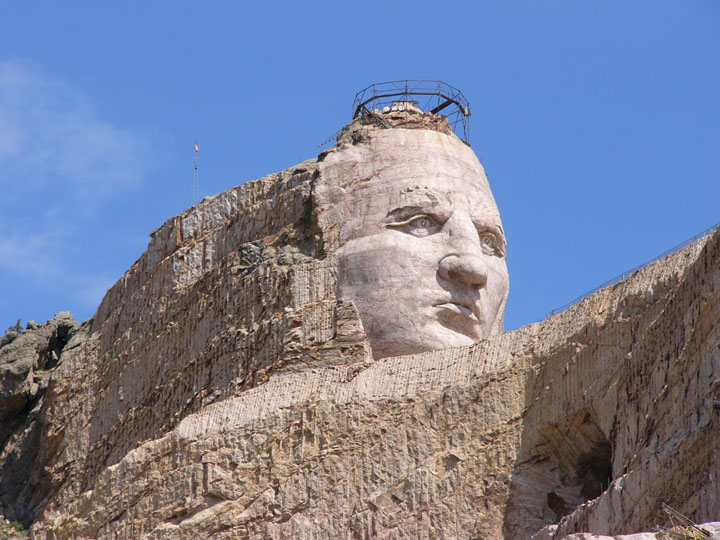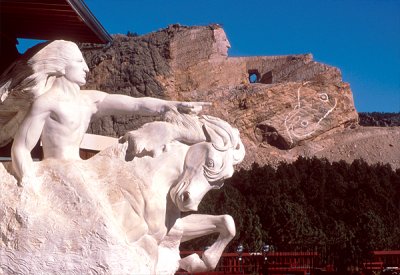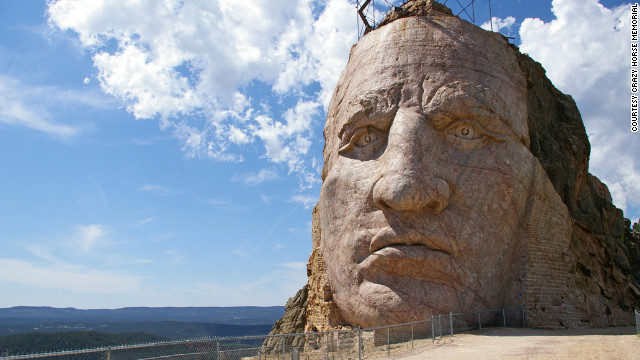Crazy Horse Pictures Biography
Source(Gogle.com.pk)Editorial Reviews
Amazon.com Review
In writing his superb life of Crazy Horse, Larry McMurtry faced the same obstacle as every previous biographer of the Oglala Sioux icon: a notable paucity of facts. This didn't inhibit such chroniclers as Mari Sandoz or Stephen Ambrose (whose dual portrait of Crazy Horse and George Custer featured a certain amount of authorial ventriloquism). In this case, however, the shortage of documentation actually works to the reader's advantage. Unencumbered by reams of scholarly detail, McMurtry's book has the shapeliness and inevitability of a fine novella. The author may describe it as an "exercise in assumption, conjecture, and surmise"--but his phrase does scant justice to this elegant, admirably scrupulous portrait.
As McMurtry recounts, Crazy Horse was born around 1840 in what is now South Dakota. Already the arrival of white settlers--who brought with them such mixed blessings as metal tools, firearms, and smallpox--had begun to transform the culture of the Plains Indians. But soon a more ominous note crept into the relationship: "The Plains Indians were beginning to be seen as mobile impediments; what they stood in the way of was progress, a concept dear to the American politician." As whites sought to remove these impediments with increasing brutality, Crazy Horse led his people in a sporadic and ultimately doomed resistance, which peaked at the Battle of Little Bighorn in 1876. Within a year the young warrior (and occasional visionary) had surrendered to the United States Army. Four months later he was dead, stabbed in a highly suspicious scuffle with white and Indian policemen, and the Sioux resistance died with its legendary leader.
McMurtry's powers of compression are formidable. In no more than a few rapid paragraphs, he gives a sense of how this "prairie Platonist" divided the world into transient things and eternal, invisible spirits. He also conveys his opinion of Caucasian double-dealing with fine, acerbic efficiency: "In August, Custer emerged and described the beauties of the Black Hills in mouthwatering terms. In another life he would have made a wonderful real-estate developer. In this case he sold one of the most beautiful pieces of real estate in the West to a broke, depressed public who couldn't wait to get into those hills and start scratching up gold." McMurtry's Crazy Horse is the leanest and least rhetorical version yet of this American tragedy--which makes it, oddly enough, among the most moving. --James Marcus --This text refers to an out of print or unavailable edition of this title.
From Publishers Weekly
McMurtry's historical biography of Crazy Horse, the Sioux warrior who was a leader at the Battle of Little Big Horn, is one of two initial audio releases in the new Penguin Lives series. (The other is Marcel Proust by Edmund White, read by Barbara Rosenblatt). In each, an accomplished novelist tackles the short-form biography as a literary challenge (note: as audio programs, these are only "slightly" abridged). For McMurtry, this means reexamining the American Old West, the territory of his epic, multivolume fiction adventures (Lonesome Dove, etc.). Noting that almost nothing that Crazy Horse said was ever recorded, McMurtry relies on the historical record, interviews with elderly Sioux conducted early in this century and on his own thoughtful analysis of the general mood of the times. As audio, it's this sense of the author's fresh curiosity that keeps the program interesting. Actor Conger performs his narration in subdued tones, which respectfully reflect the academic spirit of McMurtry's project. Simultaneous release with the Viking hardcover. (Feb.)
Copyright 1999 Reed Business Information, Inc. --This text refers to an out of print or unavailable edition of this title.
See all Editorial ReviewsI'm Phoebe Zimmermann. And I'm Steve Ember with the VOA Special English program PEOPLE IN AMERICA. Today, we tell the story of a Native American, Crazy Horse. He was a leader of the Lakota Indians. Some people call his tribe the Oglala Sioux.
Crazy Horse's people belonged to one of seven great families who called themselves Lakota. The word Lakota means friends or allies.
The Lakota people were hunters. They moved with the seasons. They moved through the great flat lands and the great mountains of the north-central United States. The Lakota depended on wild animals for food and clothing, and for the materials to make their tools and homes. They depended especially on the buffalo, the great hairy ox-like creature. Huge groups of buffalo ran free across their lands.
Great changes came to the Indian territories during the middle eighteen hundreds. The population of the United States was growing. Settlers left the cities of the East for the wide open spaces of the West. The settlers followed the railroads extending across the continent. More settlers moved west when gold was discovered in California in eighteen forty-nine.
The ways of the settlers were not the ways of the Indians. The culture of the white people clashed with the culture of the red people -- often in violence.
The United States army was sent to move the Indians and protect the settlers. Many Indian tribes refused to move. Their lands, they said, contained the bones of their fathers and mothers. It was holy ground. They fought the soldiers.
Crazy Horse's tribe, the Lakota, had many powerful leaders and skilled warriors. Crazy Horse, himself, was greatly feared. The soldiers could not defeat him in battle. Most white people did not understand why the Lakota fought so hard. They knew little of the Indians' way of life. They did not know Crazy Horse at all.
Much of what we have learned about Crazy Horse came from his own people. Even today, they still talk about him. To the Lakota, he was both a warrior and a holy man.
No one knows for sure when Crazy Horse was born. Perhaps around the year eighteen forty. But we do know when he died. In eighteen seventy-seven, when he was in his middle thirties.
There are no photographs of Crazy Horse. But it is said that he
Crazy Horse Pictures for Kids Black and White to Color Funny Hd Wallpapepr Images Pics
Crazy Horse Pictures for Kids Black and White to Color Funny Hd Wallpapepr Images Pics

Crazy Horse Pictures for Kids Black and White to Color Funny Hd Wallpapepr Images Pics

Crazy Horse Pictures for Kids Black and White to Color Funny Hd Wallpapepr Images Pics
Crazy Horse Pictures for Kids Black and White to Color Funny Hd Wallpapepr Images Pics

Crazy Horse Pictures for Kids Black and White to Color Funny Hd Wallpapepr Images Pics\
Crazy Horse Pictures for Kids Black and White to Color Funny Hd Wallpapepr Images Pics

Crazy Horse Pictures for Kids Black and White to Color Funny Hd Wallpapepr Images Pics

Crazy Horse Pictures for Kids Black and White to Color Funny Hd Wallpapepr Images Pics

Crazy Horse Pictures for Kids Black and White to Color Funny Hd Wallpapepr Images Pics

Crazy Horse Pictures for Kids Black and White to Color Funny Hd Wallpapepr Images Pics
Crazy Horse Pictures for Kids Black and White to Color Funny Hd Wallpapepr Images Pics

Crazy Horse Pictures for Kids Black and White to Color Funny Hd Wallpapepr Images Pics
Crazy Horse Pictures for Kids Black and White to Color Funny Hd Wallpapepr Images Pics

Crazy Horse Pictures for Kids Black and White to Color Funny Hd Wallpapepr Images Pics

Crazy Horse Pictures for Kids Black and White to Color Funny Hd Wallpapepr Images Pics

No comments:
Post a Comment